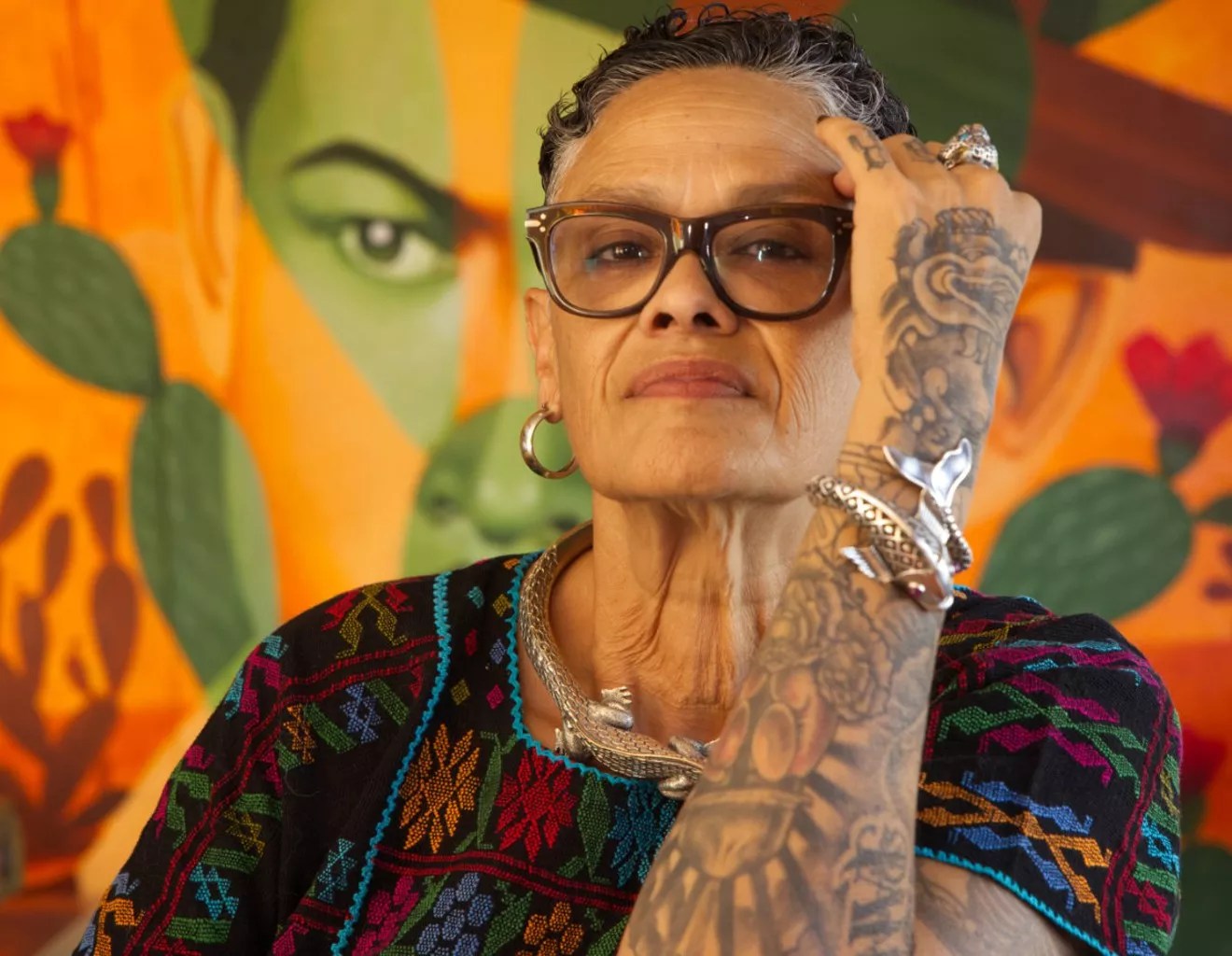
Zee Peralta

Audio By Carbonatix
When chef Silvana Salcido Esparza opened Barrio Café with business and then-life partner Wendy Grubler on July 11, 2002, the tiny kitchen of the new restaurant flooded the same day.
But Barrio Café, a restaurant that refused to follow preconceived notions of Mexican food and didn’t let a little water get in the way, went on to become a game changer in Phoenix cuisine.
Howard Seftel, then a food critic for the Arizona Republic, gave the restaurant a gleaming five-star review a few months after it opened, something unheard of for any Mexican eatery at the time. He later named Salcido Esparza in a list of the “Valley’s first Golden Age of Independent Chefs,” writing that the restaurant “redefined Mexican food.”
Looking back, it’s easy to see what he was so passionate about. Salcido Esparza was determined to blaze her own path, serving guacamole, prepared tableside, with pomegranate seeds in it. The enchiladas are topped with smoked mole, at once savory and sweet, the melty Oaxacan quesillo the cherry on top.
This year, make your gift count –
Invest in local news that matters.
Our work is funded by readers like you who make voluntary gifts because they value our work and want to see it continue. Make a contribution today to help us reach our $30,000 goal!
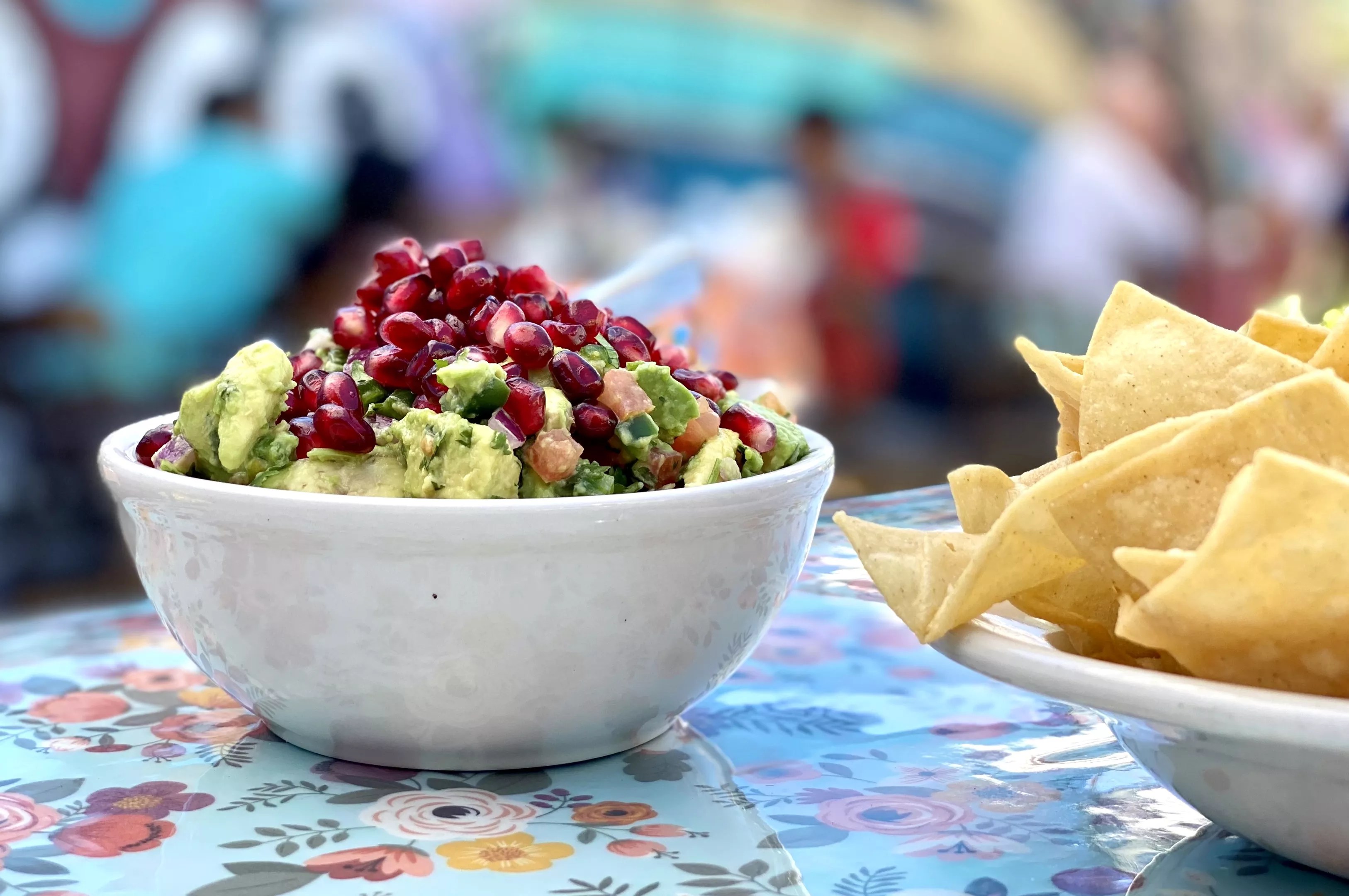
Barrio Café’s “world famous” guacamole pops with pomegranate seeds.
Allison Young
And forget about American or cheddar cheese on this menu; that would just be lazy, Salcido Esparza says.
“I took myself seriously. I wasn’t gonna cheapen who I am. People thought that Mexican food had to be $8.99. They expected chips and salsa,” Salcido Esparza says. “But that’s not the restaurant I wanted to open.”
Back in 2002, Phoenicians had no shortage of Mexican fare to choose from. But other menus offered little variety, with carne asada tacos and chicken quesadillas that seemed to be copied and pasted from one restaurant to the next.
Barrio Café challenged conventional perceptions about what Mexican food could be 20 years ago, and the restaurant is still doing that today. It’s forgoing Norteño classics often found in Phoenix like meat and flour burritos for harder-to-find regional variations like the famed Yucatan cochinita pibil, a smoked sour-orange pork that falls apart as you place it onto a corn tortilla. It’s served with Yucatan pico de gallo, a side of habanero peppers that provides a kick while the bitter orange from the 12-hour slow-roasted pork lends a hint of sweetness.
Ryan Kashanipour, a historian and assistant professor at the University of Arizona who teaches about Latin American food, medicine, and contemporary culinary practices, has studied the history of Mexican food.
“Today, there is a broadening and deepening of the variation of Mexican food beyond Mexican-American, which is more working-class food, and a greater appreciation for the variety of food across Mexico,” Kashanipour says.
He notes that Salcido Esparza elevates food from across Mexico while keeping it accessible to the community.
“It’s priced pretty well and just as sophisticated as anything I’ve gotten anywhere in the U.S.,” says Kashanipour, who is originally from Texas.
Salcido Esparza’s mix of classical and off-the-beaten-path training shines through in her menu. After graduating from Scottsdale Culinary Institute in the mid-1990s, she traveled to Mexico on a scholarship to learn more about the cuisine of her ancestors.
But when she arrived to find a North American chef using Indigenous recipes to teach tourists, she quickly left the program, forgoing her scholarship to backpack through Oaxaca. There, a matriarchal society taught her to cook iguanas and mole. The curious chef soaked it all up.
She watched as Indigenous women demonstrated how to make mole time and time again. Even after Salcido Esparza had been doing it for years, she figured she could always learn something new.
“I am focusing on what she’s doing, how her hands are moving, the history. The movement of her hands is the movement of her mother and her grandmother before her, like they’re all holding hands and making it together,” she says.
And whether it’s mole or masa for tamales, the process and history of Mexican food inform the seasonal menu at Barrio Café, which is sprinkled with staples that stand the test of time. Chef Silvana Salcido Esparza’s Barrio Cafe on 16th Street near East Thomas Road. Lynn Trimble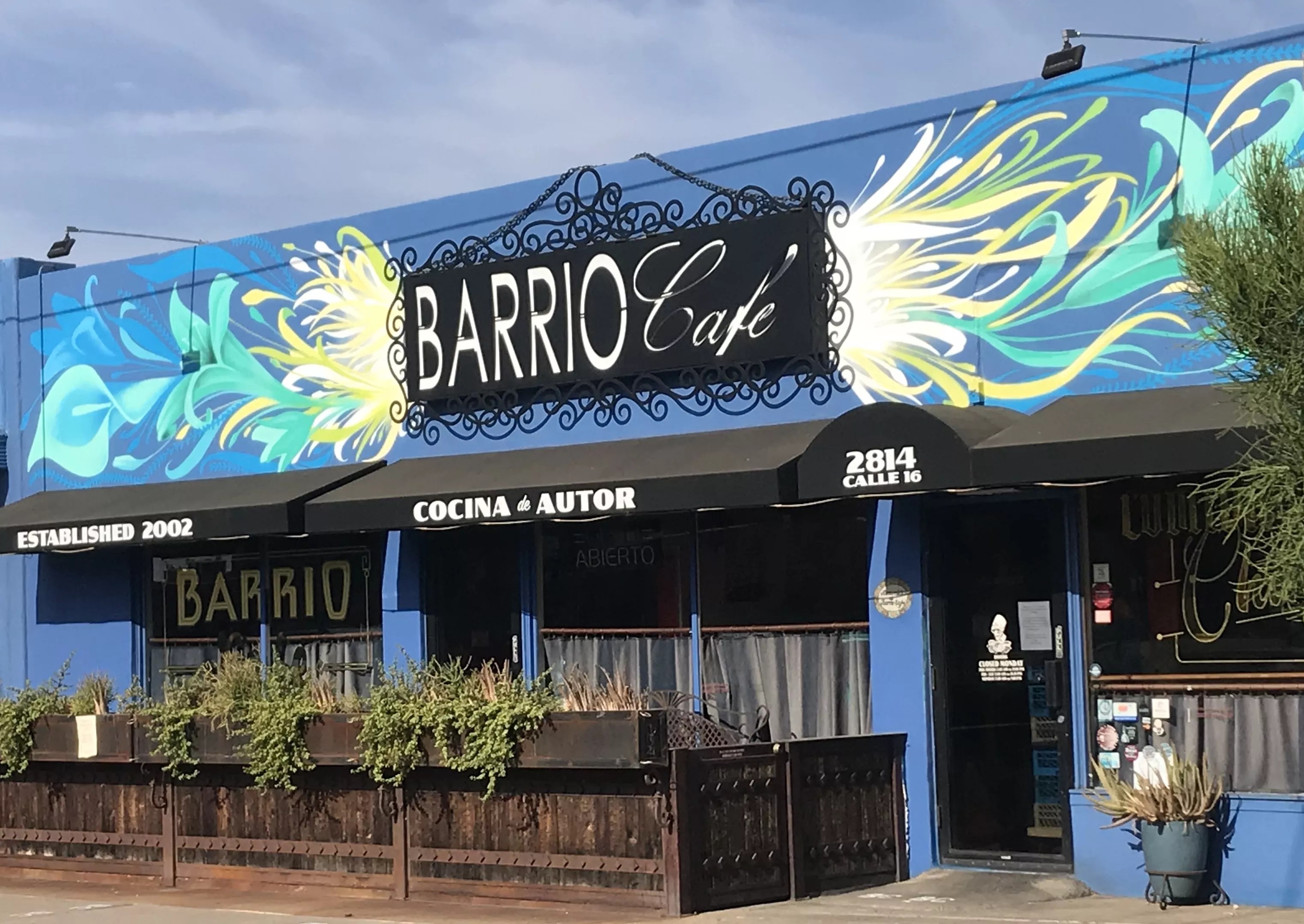
The pollo en mole is one such dish: a spice-rubbed half bone-in chicken topped with your choice of sauce, whether it’s the dark-as-molasses mole negro with chocolate and hoja santa, a peppery herb with hints of anise, or the mole rojo crafted with pasilla and ancho chiles. The chicken is served with corn tortillas and plenty of fixings including pickled onions, sweet piloncillo carrots, and quelite beans, a dish made with pinto beans, wild greens, onions and spices.
On a recent trip to the unpretentious eatery, bright murals decorated the walls and Moroccan lanterns hung from the ceiling. Salcido Esparza sat across from a table of five, chatting familiarly with her customers while sporting a shirt that read “Decolonize.” If you didn’t know who she was, the magnitude of the recipes that preceded her, or the fact that she’d been nominated for the James Beard Award for Best Chef: Southwest eight times over, you’d mistake her for a friend of the family.
Barrio Café is a welcoming space. It feels as though you’ve landed in your abuela’s clay-tiled home, the food just as good as it was in your childhood memories. Chiles En Nogada at Barrio Café. Natasha Yee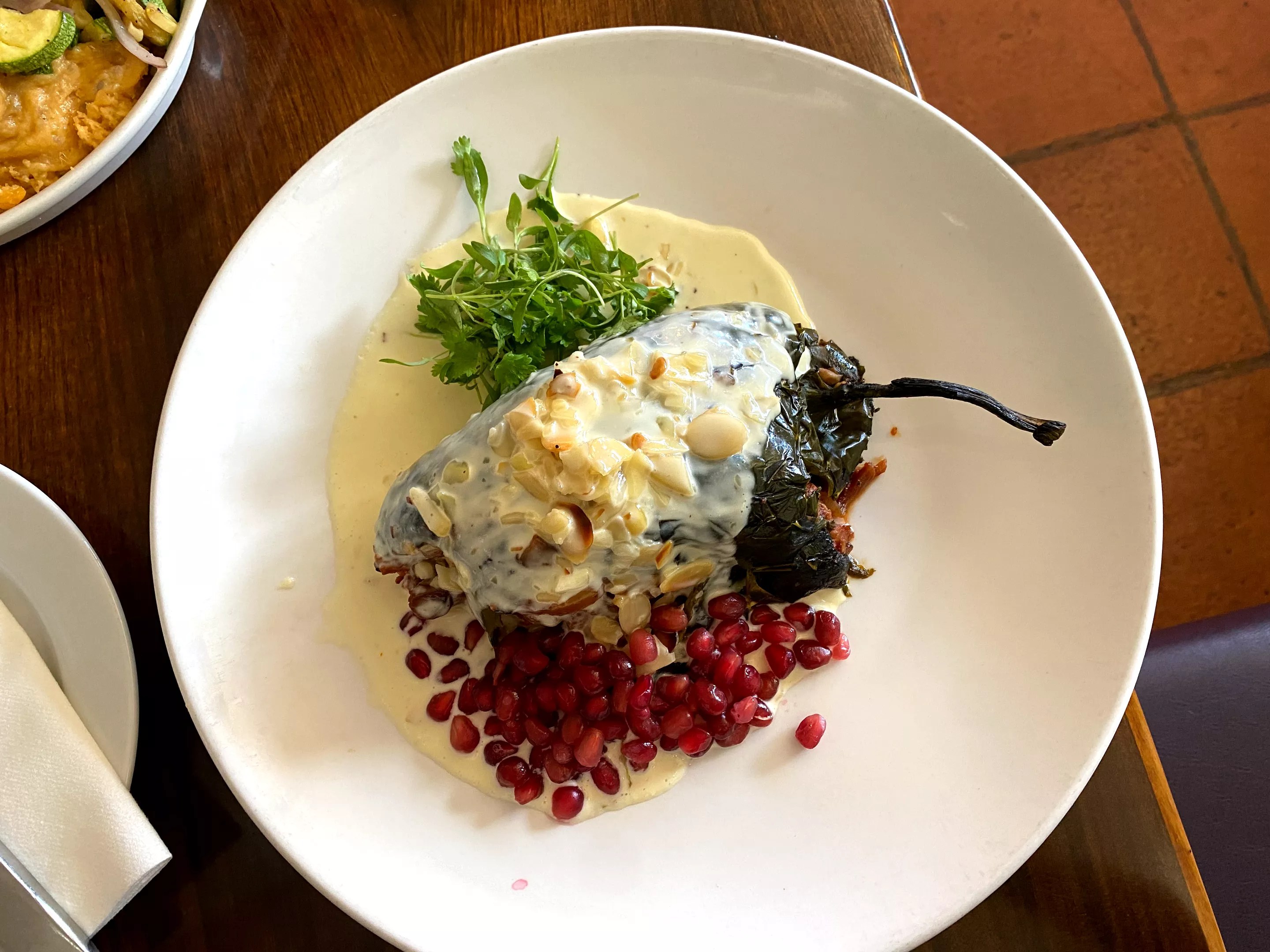
The chiles en nogada is a stuffed poblano pepper dish traditionally cooked with pork, though Barrio Café makes a chicken and vegan version. The chicken iteration also contains nuts, dried fruit, apples, and pears, and is topped with an almond cream reduction, pomegranate seeds, and cilantro.
The cream adds depth to the mildly spicy and sweet dish while the pomegranate seeds bring tang. It’s served with spiced mashed potatoes and calabacitas, which are made with sauteed Mexican zucchini, red onions, and grilled corn. It’s an example of Salcido Esparza’s avant-garde approach to Mexican cooking, Kashanipour says.
“Barrio Café pays homage to some of the deep traditions of Mexico without being wedded to them,” Kashanipour says.
This is exemplified in vegan variations of popular dishes like posole verde, traditionally a pork and hominy soup, and the huitlacoche enchilada. Huitlacoche is a parasitic fungus that envelops planted corn kernels, and an admired edible delight in Mexico and Central America. Salcido Esparza tops hers with a shallot-truffle oil cream reduction.
The chiles en nogada represents the colors of the Mexican flag, garnished with fresh green cilantro and topped with a white cream sauce and red pomegranate seeds. It’s a regular meal on September 16 in Mexico, the country’s Independence Day, says Ruben Salcido, Salcido Esparza’s nephew.
Salcido, 29, has been working alongside his tía at Barrio Café and its various iterations for the past 15 years. That spans Barrio Queen in Old Town Scottsdale, no longer affiliated with the original, and Barrio Urbano, which opened next to Culinary Dropout at The Yard on Seventh Street in 2015, only to close two years later. Salcido also cooked with Salcido Esparza at Barrio Café Gran Reserva, a tiny restaurant with white linen tablecloths on Grand Avenue that succumbed to COVID-19.
He began as a busser and dishwasher, then made his way to the kitchen, eventually attending culinary school under Salcido Esparza’s guidance.
“Silvana will occasionally pop in to cook with me and critique my work,” he says. “She’s very friendly but if I’m doing it wrong or something needs more salt, she’ll let me know. She runs her kitchen the way she likes it.” The Travelodge on Van Buren as it looks today, complete with a Lucretia Torva mural of Chef Silvana. Lucretia Torva
Salcido Esparza’s unique approach caught the eye of another creative, Lucretia Torva, a muralist who painted a depiction of the chef outside the Travelodge at Seventh Avenue and Van Buren Street. In the mural, Salcido Esparza dons a chef’s coat and holds out a tattooed forearm, carrying a silver spoon in her hand which reflects Phoenix, with downtown skyscrapers, a palm tree, the bright sun, and all.
Torva suggested Salcido Esparza as the subject of a painting for a campaign by Estrella Jalisco, a Mexican beer company, that sought to highlight local heroes.
“She’s a very well-known active participant in the community. Silvana stands up for marginalized groups, whether they are Mexicans or lesbians,” Torva says.
Torva also appreciates Esparza’s dedication to her craft, noting that the chef has researched and experienced traditional methods of agriculture and cooking.
“She can whip up stuff with food like I can fling a painting,” Torva says.
It’s a talent that has brought Salcido Esparza much acclaim. And she doesn’t just bask in the esteem; she uses it to help others. Through Calle 16, a mural project the chef created in response to Arizona Senate Bill 1070, a controversial anti-immigrant law passed in 2010, Mexican artists paint the walls around her 16th Street and Thomas Road restaurant to elevate perceptions of Mexican-American culture.
She advocates for LGBTQ equality, promoting pride events and proudly sharing photos of her own relationship on her social media accounts. The chef is also a constant champion for the unhoused in Phoenix, whether through bottled water and clothing drives, or preparing and handing out freshly cooked meals at local parks.
“For under $3 per meal, we fed folks a hot meal on a rainy day. See how that works?! It was not that hard. Barrio Café was really slow for lunch yesterday so it was a perfect project for the staff,” Salcido Esparza wrote in a June Facebook post.
She provided meals to the hungry during the pandemic, continuing although Barrio Café Gran Reserva closed its doors and her original restaurant struggled to stay open amid plumbing issues and the economic impact of the coronavirus.
President Joe Biden and Vice President Kamala Harris visited Barrio Café while campaigning in October 2020. The chef greeted them in front of a Phoenix mural in the parking lot, donning a mask and keeping her distance while a crowd cheered on. Chef Silvana Salcido Esparza. Zee Peralta
Salcido Esparza is also the vice president of a lowrider club, a vibrant subculture traditionally dominated by Latino men. One of her lowriders sports a beige and brown paint job with “Chef Silvana, Comida Chingona” spelling out the chef’s catchphrase in stylized letters across the side. A silver emblem on the back represents Rosarito, Mexico, the chef’s hometown.
The story of Salcido Esparza’s life and her restaurant Barrio Café is anything but ordinary, something she hopes to document in an autobiographical cookbook called La Hija de la Chingada. The book is dedicated to her 5-year-old grand-niece, Rosa Leonor, who says she’s already a chef when people ask her.
“I have written this book for Rosa as a story of who we are as a family and where we come from. A guide of sorts, in hope that she will find some solace and resonate with the roads our ancestors have taken,” Salcido Esparza wrote in an excerpt posted on Instagram. Chef Silvana Salcido Esparza. Zee Peralta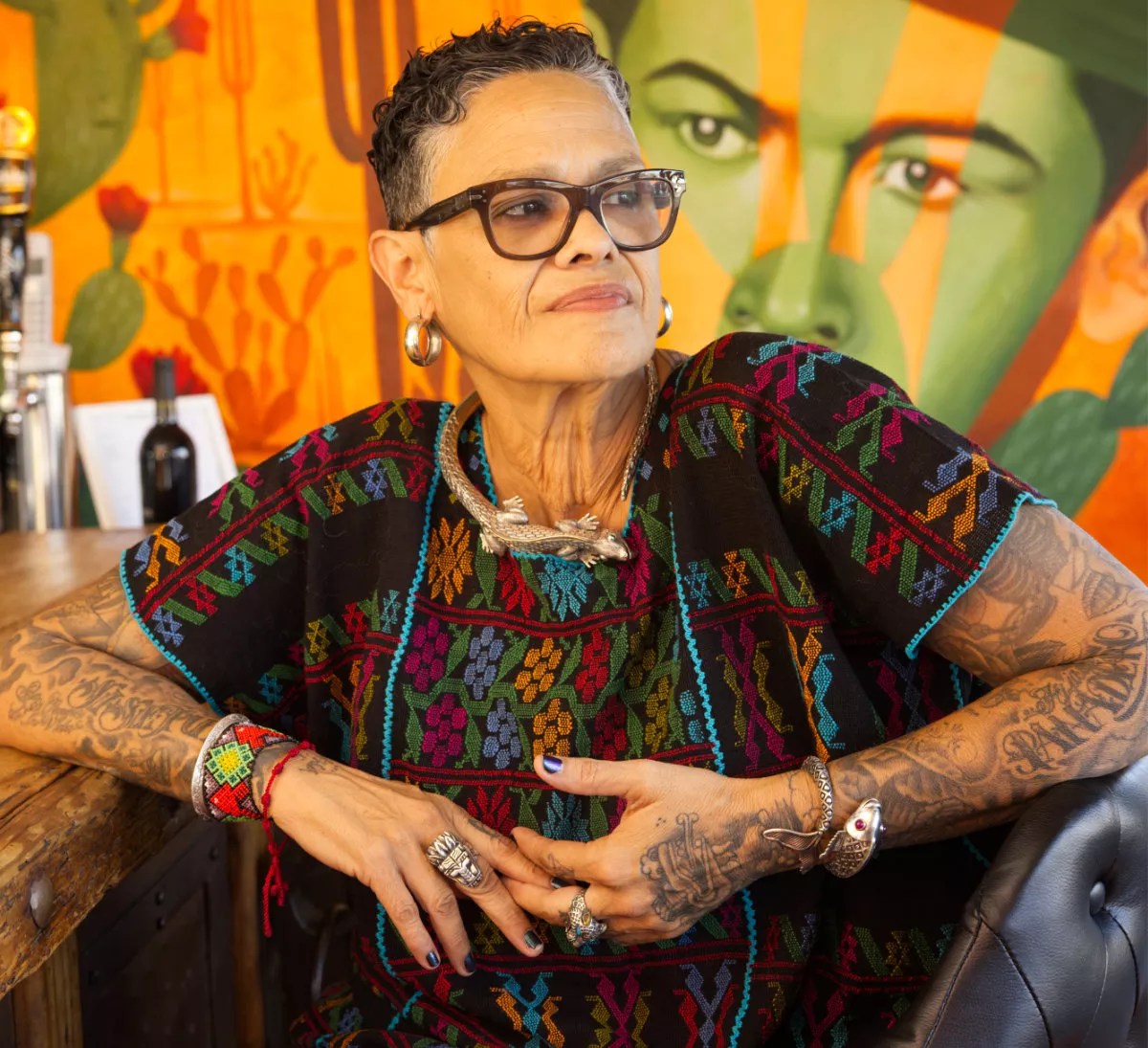
After 20 years, Salcido Esparza can still be found at Barrio Café, though she’s in the kitchen a bit less nowadays.
“Restaurant years are like dog years,” says the seasoned chef, who has invested so much of her time into passing on the craft.
“All of my nieces and nephews in Phoenix work at restaurants,” she says. “I’m hoping that one of them would be the one to take over the family legacy.”
Barrio Café
2814 North Sixteenth Street, #1205
602-636-0240
barriocafe.com